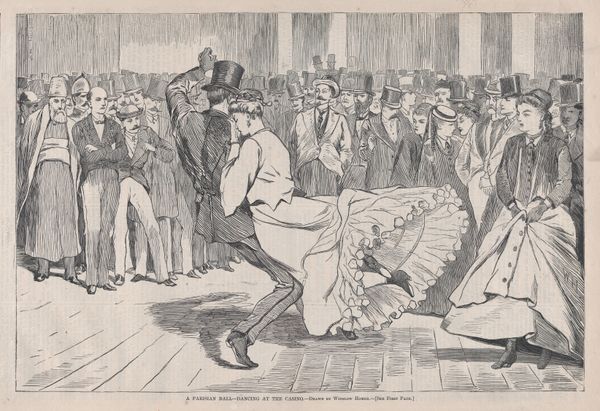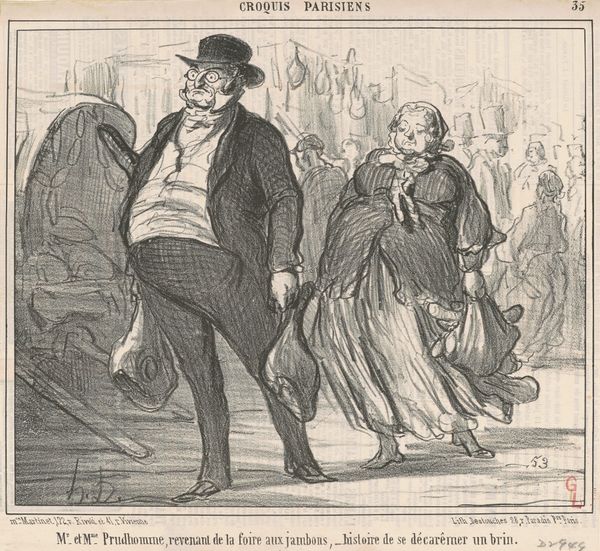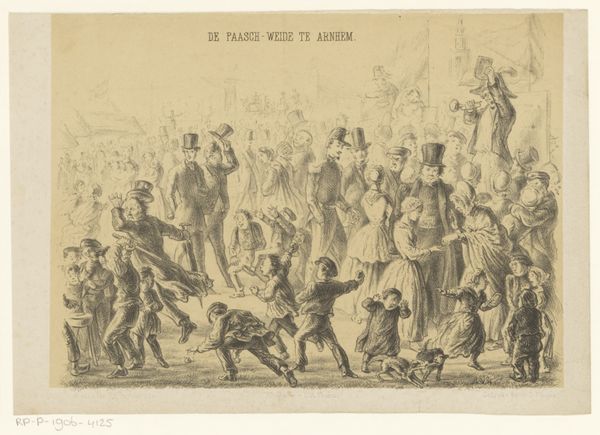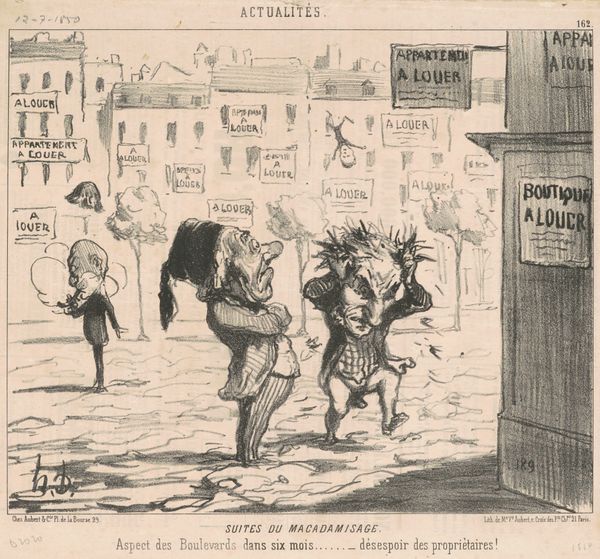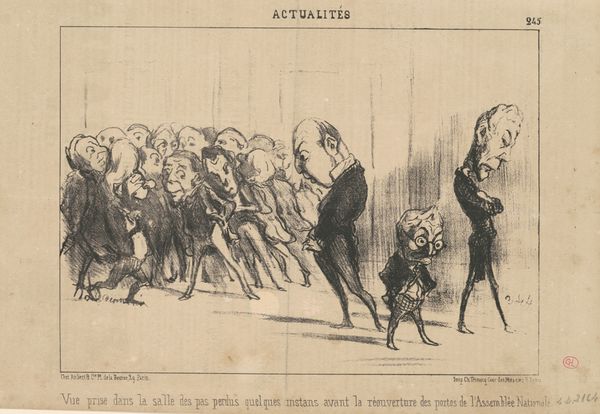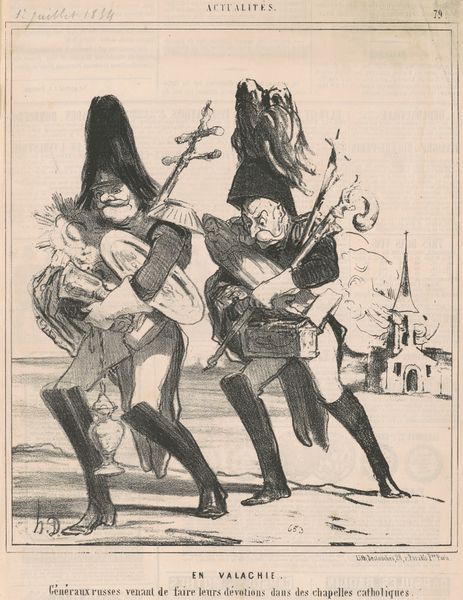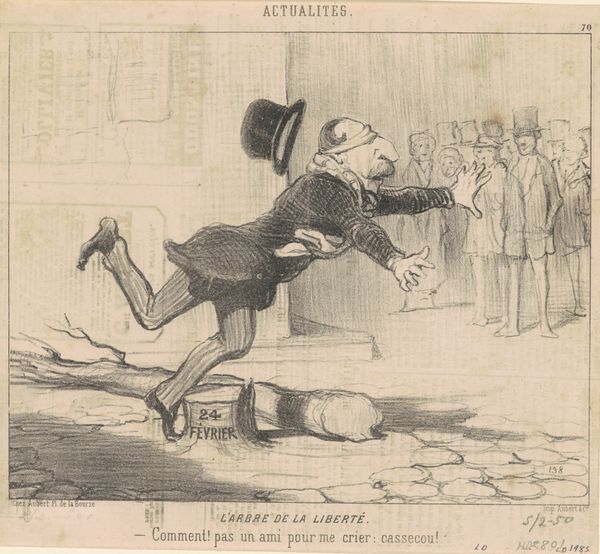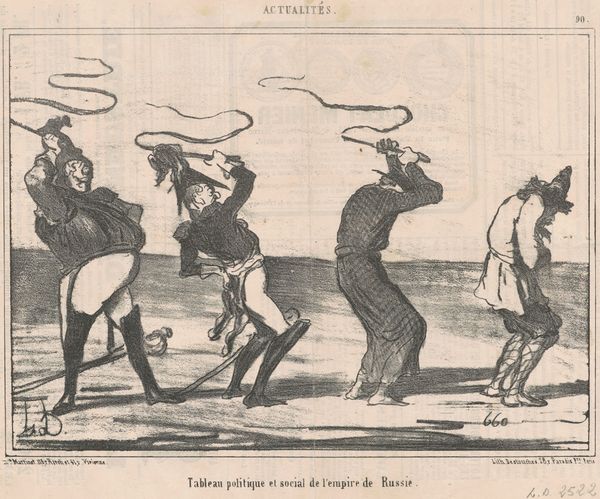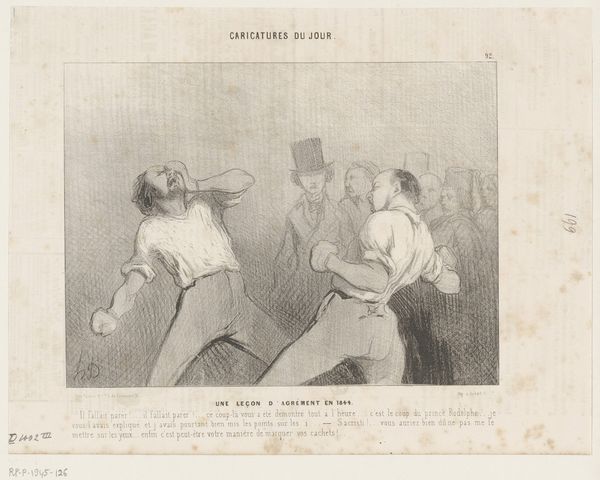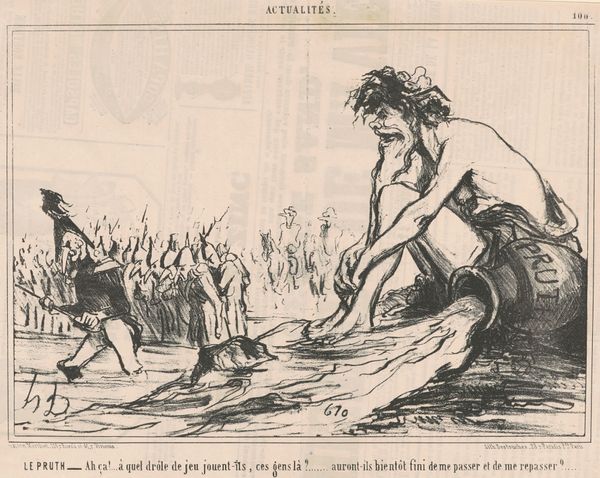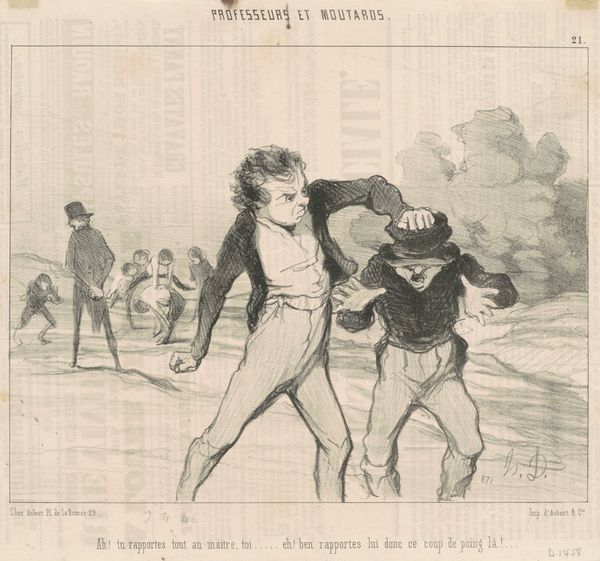
lithograph, print
#
lithograph
# print
#
caricature
#
figuration
#
romanticism
#
genre-painting
Copyright: National Gallery of Art: CC0 1.0
Curator: Looking at Daumier's "Voyons, général...", a lithograph from the 19th century, what grabs your attention? Editor: It's really striking, the grim reaper dancing amidst this crowded ball, and a general watches on. I wonder about the commentary it is making on power, corruption, and society at that time. How do you interpret it? Curator: Precisely. A materialist lens draws our attention to the means of production – lithography – which democratized image-making, enabling widespread dissemination of social critique. Consider Daumier's role in the French Revolution, then reflect on this work. Does this work expose the decay beneath the polished veneer of bourgeois society, hinting at the material realities often ignored in Romantic art? Editor: So, you're saying the choice of lithography is key to its message. Was lithography important because it was affordable? Curator: Exactly! Think about the consumption of imagery in 19th-century France. Lithographs could be reproduced quickly and cheaply, reaching a broad audience and fostering public discourse. How might this mass production influence our reading of the image's content? What specific elements speak to that critique? Editor: I see. The rigid posture of the General contrasts sharply with the frenzy around him. Maybe the 'dance of death' isn’t just a morbid symbol, but a comment on the reckless actions of leadership. Are the general's clothes a sign of social privilege? Curator: Certainly, his uniform signals authority and perhaps, a detachment from the suffering implied by Death's dance. How does the stark black and white of the print enhance or detract from the reading of these social commentaries? What does the limited color palette reveal? Editor: It adds to the starkness, doesn't it? Makes it feel less romanticized and more… journalistic. Curator: An insightful connection. The material reality of printmaking, the constraints, becomes intertwined with the message of social critique, revealing an underlying tension within 19th-century French society itself. Editor: This makes me see how materials and production methods deeply inform the social power of a work.
Comments
No comments
Be the first to comment and join the conversation on the ultimate creative platform.

